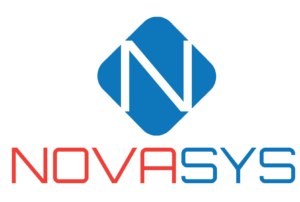A NOC is a centralized location where IT professionals can troubleshoot, monitor and optimize enterprise networks
NOC (pronounced “knock,”) stands for a network operations center, and if the term conjures up images of a NASA-like control room, you would not be too far off from reality – at least at some organizations.
While the role of a NOC can vary, the general idea is to create a room or centralized facility where information technology (IT) professionals can constantly monitor, maintain and troubleshoot all aspects of a network. The NOC must also be equipped with all of the technology required in order to support those operations, including monitors, computers, telecommunications equipment and a fast connection to network resources.
NOCs were created for two main reasons. The first was to give IT staffers a central location to work from, instead of having them run around trying to fix problems or perform preventative maintenance, like patching systems, from different locations.
The second, and probably more critical reason, was to allow the constant monitoring of a network. While not all NOCs are directly involved in security operations (those duties are sometimes offloaded to a SOC, or Security Operations Center), those working in a NOC are often the first to get an indication that something is wrong with the network, whether that is because of a security issue, a hardware failure or something else.
How Are NOCs Designed and Organized?
There is no single answer or standard blueprint about how a NOC should be configured, or how the people working there are organized. A smaller organization’s NOC might be a single office or small conference type room with a couple workstations for technicians to monitor the network and troubleshoot problems.
Larger groups, especially those that are using their NOC to monitor an entire data center, might instead build out huge control centers with large central monitors or even projection screens showing overall network health, and then have workstations scattered all around for technicians who are responsible for individual subsets of network operations. Those individual workstations normally also have multiple monitors themselves, so the entire facility does start to resemble something like you would see at NASA during a space launch.
And like the blueprint for the room, there is no single way to organize NOC workers. However, there is a little bit more consistency in terms of the organization of human IT staff. Jobs are almost always structured into a tight hierarchical group which are designated and ranked according to their “level.”
The higher the level, the more experience a NOC technician generally has. For example, Level 1 techs, the lowest rank, are almost always the ones on the front lines, answering phones and doing things like helping users recover their lost passwords, assuming the NOC provides help desk type functions. In any case, if a Level 1 tech can’t fix a problem because it involves something above their skill or permission level, like say, repartitioning a server or adding more resources to a container, then the job is passed off to a Level 2 technician.
Level 3 technicians are extremely skilled and knowledgeable, and there is typically a shortage of them at most companies. They normally only get called to action for something of critical importance. If the entire East Coast operations on a network goes down in the middle of the night, it’s the Level 3 techs who will be working to fix it.
What Does a NOC Do?
The simple answer to what a NOC does is that it is responsible for nearly everything involving the network that is being protected. But while the primary responsibility is always to monitor the health of a network and troubleshoot any problems, there are a lot of individual tasks that almost all NOCs and their staffers regularly accomplish. Besides network monitoring, here are a few of the most common responsibilities entrusted to a NOC and its staff.
Patch Management: Computers are never static for long. It doesn’t matter if you are talking about desktops, laptops or servers, there are always patches that need to be applied. Some patches are critical, like those which eliminate security vulnerabilities, while others simply improve performance or their interface in some way. And it’s not just regular computers that need patched. Network hardware also needs to be regularly updated. These days, even sensors and tiny IoT devices require regular patching.
Patch management might even extend to user devices, making sure that endpoints are fully up to date with the latest patches before allowing them to fully connect with network resources. As such, a lot of effort in a NOC is often devoted to patching systems.
Policy Enforcement: A network is more than just the hardware and software that drives it. At its heart, it’s a collection of rules that both human users and t


